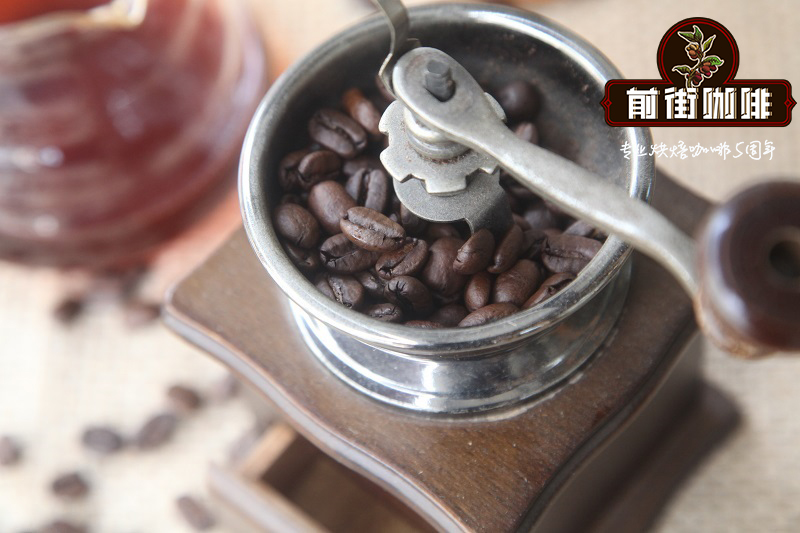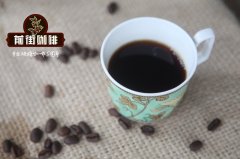Correct identification of the world's three major coffee tree species: Arabica and Robusta and Liberia

Professional coffee knowledge exchange more coffee bean information please follow the coffee workshop (Wechat official account cafe_style)
Coffee was used by Yemenis in southwestern Arabia as early as 575.
Western Europe started drinking around 1615.
Drinking coffee was popular in continental Europe in the early 17th century.
Coffee is mainly grown in the world.
In the coffee plantations of tropical or subtropical continents or islands in America, Africa, and Asia
So along the equator as the center of the coffee growth belt, also known as the coffee belt.
Coffee is divided into three original systems.
Arabica coffee (Arabica) is also called Arabica coffee.
Arabica coffee beans and flowers
Arabica (Arabica) is the most traditional Arabica coffee variety. Originally from East Africa, coffee was monopolized by the Arab world for a long time before the 15th century, so it was called "Arabian coffee" by Europeans. In the primitive time, all the commercial coffee in the world was Arabica coffee, but at the end of the 19th century, there was a large-scale disease, and growers began to look for other disease-resistant varieties. Arabica coffee is still the main coffee variety, accounting for about 3% of the world's total coffee output. It is mainly grown in Latin American countries, but also partly in Indonesia and the Pacific islands. At present, the geographical and climatic conditions of Brazil, the largest coffee producer in the world, are very suitable for the growth of Arabica coffee, and the main coffee varieties planted are also small fruit coffee. Brazil's coffee production accounts for more than 1 / 3 of the world's total output.
Robusta coffee is also known as Congolese coffee.
(medium fruit coffee) Robusta is the second largest variety of coffee in the world, accounting for about 20% of the world's coffee production. The berries of Robusta coffee are larger than Arabica fruit coffee but smaller than Libyan fruit coffee, and it has strong disease resistance. It is suitable for growing in a tropical climate with an altitude of 200-300 meters. It contains a high caffeine concentration of about 2% Lou 4%, but its taste is sour and astringent. It is mainly grown in some tropical countries such as Indonesia, India and Uganda, and most of it is used as instant coffee.
Liberica coffee, also known as Liberian coffee.
Libyan coffee beans and flowers
(big Fruit Coffee) Liberica is a pest-resistant variety suitable for high-temperature and humid climates. Its berries and seeds are nearly twice the size of Arabica coffee. It has a rich flavor but a light flavor. Nordic people generally prefer this kind of coffee. Mainly grown in Liberia, C ô te d'Ivoire and Madagascar in Africa.
-
At present, there are more than 100 kinds of coffee in the world, and most of the common cultivated species belong to three original species system and some hybrids.
The three original species can be subdivided into dozens of varieties.
Therefore, coffee beans will have different characteristics according to different varieties, producing areas and brands.
Arabica coffee accounts for 76% of the world's total output.
Robusta coffee accounts for about 20% of the world's total output.
Libyan coffee is consumed only by people in Europe, except for the consumption of a few producing countries.
Arabica coffee was first introduced into China.
At present, Arabica coffee is also cultivated in large areas.
Reasons for recommendation:
Each raw coffee bean is washed and purified by exclusive use of natural enzyme solution, and then packed in vacuum after being exposed to the sun. The coffee bean is' fermented clean 'from the inside to the outside, the bean body is purer, and after baking, it can show the natural flavor of Taiwan coffee beans!
Why should coffee beans be "fermented":
Because, the raw beans before roasting go through many exquisite procedures, the edible beans only appear after shelling, and rigorous manufacturers will strictly screen and pick up intact coffee beans, but because the time and place experienced during storage may contaminate the beans, the beans before baking need a process to make them purer, so Green Diet strictly selects "Jiaojing" series of coffee beans, especially before roasting, to provide purer and more original healthy coffee beans.
Important Notice :
前街咖啡 FrontStreet Coffee has moved to new addredd:
FrontStreet Coffee Address: 315,Donghua East Road,GuangZhou
Tel:020 38364473
- Prev

How does espresso make the perfect coffee fat? Is the fat of espresso really important?
Professional coffee knowledge exchange more coffee bean information Please follow the coffee workshop (Wechat official account cafe_style) it seems that when everyone tastes espresso, they are pursuing the perfect coffee oil (crema), that is, the brown foam floating on the freshly brewed espresso. The right coffee fat has become synonymous with a good cup of coffee, but this layer contains more depth.
- Next

What is the Starbucks Arabica standard? What's so special about Starbucks Arabica coffee beans?
Professional coffee knowledge exchange more coffee bean information please follow the coffee workshop (Wechat official account cafe_style) Starbucks higher Arabica standard excellent coffee, derived from quality coffee beans. Unlike ordinary Arabica coffee beans, Starbucks Arabica coffee beans come from high-quality plantations. Starbucks has always had strict control over the quality of coffee beans.
Related
- Beginners will see the "Coffee pull flower" guide!
- What is the difference between ice blog purified milk and ordinary milk coffee?
- Why is the Philippines the largest producer of crops in Liberia?
- For coffee extraction, should the fine powder be retained?
- How does extracted espresso fill pressed powder? How much strength does it take to press the powder?
- How to make jasmine cold extract coffee? Is the jasmine + latte good?
- Will this little toy really make the coffee taste better? How does Lily Drip affect coffee extraction?
- Will the action of slapping the filter cup also affect coffee extraction?
- What's the difference between powder-to-water ratio and powder-to-liquid ratio?
- What is the Ethiopian local species? What does it have to do with Heirloom native species?

